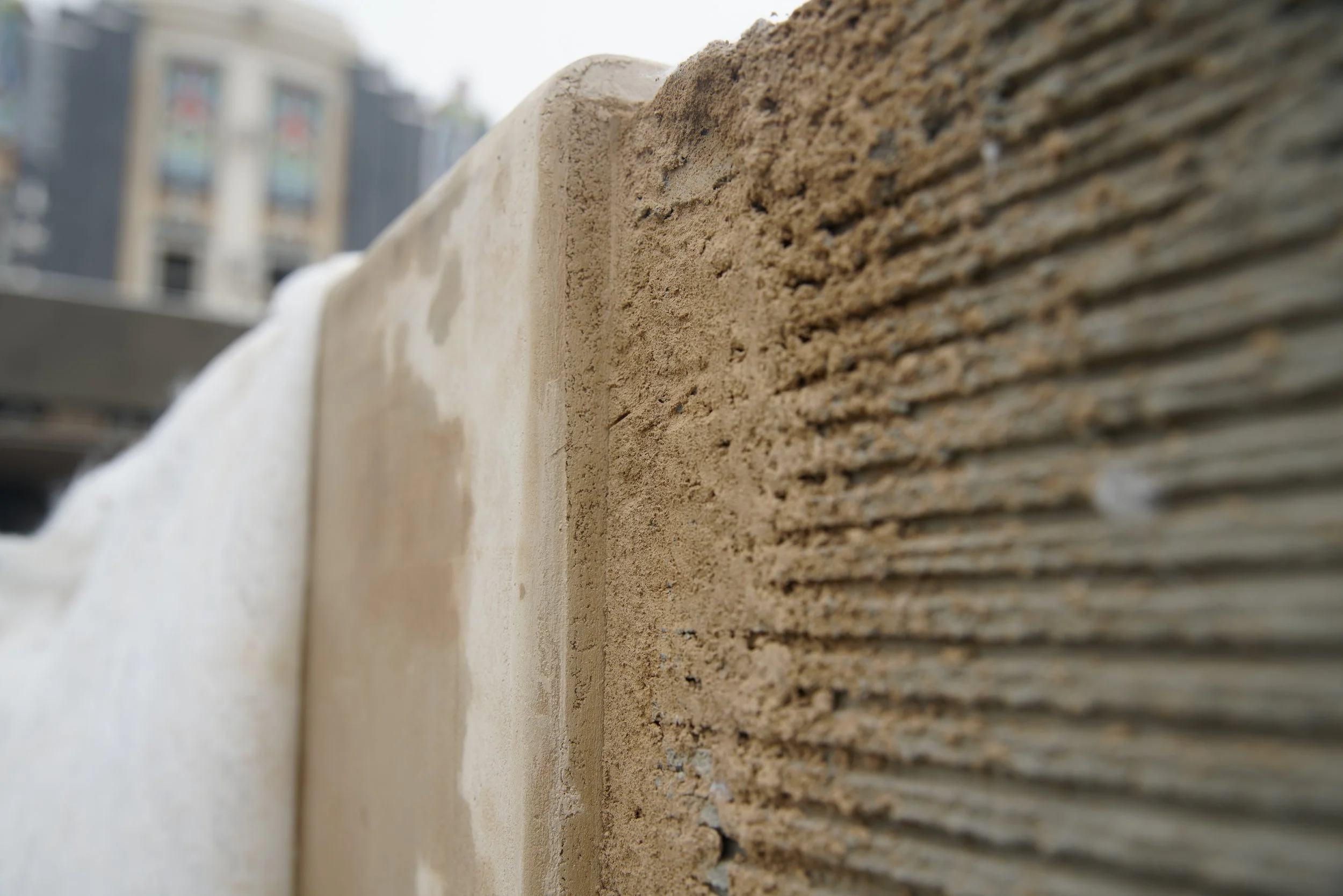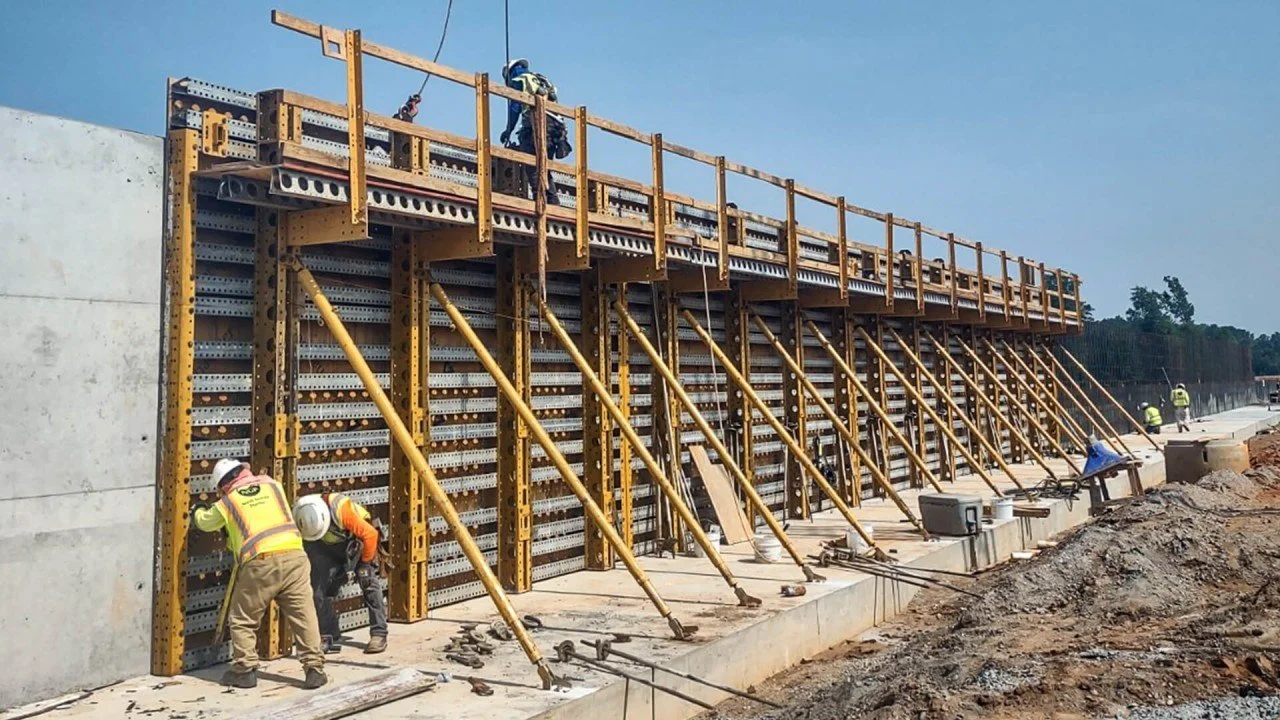Cast-In-Place Concrete: The Backbone of Themed Environments
Everyone in the industry knows cast-in-place concrete. Most picture formwork, rebar, and a crew pouring foundations or bridge decks under the sun. That image is accurate, but it’s only part of the story. In themed construction, cast-in-place (CIP) means much more than form and pour, sidewalks, curbs, walls and pillars. Although those are definitely part of the equation, it represents any cementitious system mixed, placed, shaped, and finished directly on site.
CIP concrete systems are opposite to prefabrication in nature. Instead of working within the limits of pre-cast molds or transportable panels, cast-in-place allows artisans to build exactly what the design, and the environment, demand. Whether it’s a structural element, a sidewalk, or a stone façade, every cast-in-place system shares one essential trait: it is mixed and cast directly in the field. This makes CIP systems one of the most versatile and expressive mediums in construction making it a crucial piece to themed finishes and a true backbone to themed environments.
Beyond Form and Pour
As mentioned previously, traditionally, CIP means concrete poured into forms, reinforced with steel, and left to cure in place. It’s how we build foundations, footings, walls, and structures of every size and shape. But in themed construction, the term expands far beyond structural use. Cast-in-place includes decorative toppings, overlays, and thick-build systems, including horizontal flatwork and vertical work, that are formed and customized directly on site.
These systems can be installed over an incredible range of substrates, concrete, tile, brick, wood, or even rebar and lathe. They can shape a retaining wall, refresh a plaza with a TCP statue or marquees, or even turn an ordinary façade into something decorative and immersive. In short, as we have talked about in the past, cast-in-place concrete is both the foundation beneath our feet that guides us through these immersive spaces and the creative surface that shapes a story.
The Versatility of Cementitious Systems
When you think of cast-in-place, think of it as a spectrum. At one end are full-depth structural systems, walls, slabs, and foundations. At the other are highly decorative cementitious applications that bring character and realism to the surface. Between them lies an entire world of themed craftsmanship.
Form-and-Pour Systems
The foundation of the trade. Structural systems built in place using traditional formwork and reinforcement. Ideal for slabs, walls, benches, stairs, pillars and structural elements.
Decorative concrete surfaces
Flatwork doesn’t have to be plain. When used decoratively, it can be broomed, rock-salted, washed and exposed, or stamped to resemble wood, tile, or stone. Each finish adds texture, depth, and story to a space.
Toppings and Overlays
Thin to medium-build cementitious layers that can bond to existing substrates in a horizontal or vertical fashion. Overlays can resurface old concrete, unify multiple materials, or introduce new texture and color without removing the underlying structure. These include microtoppings, stampable overlays, exposed aggregate overlays, self-leveling cements and even terrazzo.
Thick-Build Vertical Systems
Applied directly onto structure or lathe in layers up to three inches thick, these systems are hand-sculpted and carved to mimic natural stone, wood, trees, and architectural ornamentation. They bring dimension and realism to themed facades, rockwork, and feature walls.
Every one of these methods falls under the same principle: mixed, placed, and crafted in real time, directly where it will live. That’s what makes cast-in-place so powerful, it’s as flexible as it is permanent.
Craft, Control, and Context
CIP concrete work starts with the fundamentals: proper formwork, such as, wood forms of any size or divider strips to set the depth; paired with reinforcement such as rebar, wire, lathe, or mesh. Even the mix design matters, ensuring the chosen material and admixtures suit its intended use, environment, and lifespan.
During placement, vibration and consolidation prevent voids and honeycombing, creating a denser internal structure.
Because it’s performed on site, CIP gives artisans control that prefabricated systems can’t. Adjustments can be made to match real on-site circumstances like size variations, weather conditions and even design pivots. The result is a surface that feels intentional and alive, because it was crafted in response to its surroundings.
In themed construction, that responsiveness is everything. The same techniques used to pour a structural slab can also be used to pour a decorative topping, or to carve the façade of a temple, the walls of a canyon, or hand-finish a plaza that feels centuries old.
Cementitious Artistry in Themed Environments
At CASTO, we often say that concrete is one of the most artistic materials in construction, it just needs the right hands to reveal it. In themed environments, cast-in-place can become a sculpting medium.
Thick-build vertical systems let artists shape stonework, brick, or architectural reliefs directly in the field. Toppings and overlays can turn structural flooring into decorative surfaces that enhance the story and feel of a space. Each application, whether carved or poured, structural or aesthetic, ties back to one central idea: immersion through material.
Because these systems are cement-based, they naturally share structural and thermal continuity with the environment. They feel grounded, permanent, and believable. That’s what separates real-world theming from imitation, materials that don’t just look authentic, but behave like they belong there.
The CASTO Perspective
For CASTO, cast-in-place concrete represents the heart of constructability. It’s the intersection of engineering, craftsmanship, and creative expression. Every project begins with a foundation that’s formed, poured, and shaped. From there, we build up, layering texture, form, and story until the environment feels complete.
Through our training programs, we teach students and professionals that cast-in-place isn’t just a trade skill; it’s a design language. It’s where craftsmanship meets artistry, and where the built environment can become a canvas for imagination.
CIP systems are the backbone of our work and the medium through which durable structures can be creatively themed. They connect the structure to the story and turn imagination into reality.









